At the end of last year, the thought of closing a physical office to move completely virtual would’ve been one that many business owners wouldn’t have considered. They would see it as a sign of going backwards instead of growth.
But, post-COVID, the move to a virtual business isn’t seen in quite the same way because a majority of companies in the UK and around the world had no choice but to move to a completely virtual workforce during the lockdowns.
Several are still running operations mainly offsite from employee homes and looking at the cost savings from using remote workers and thinking… what if?
What if they lowered their overhead significantly by using cloud solutions that kept them connected to their team and their customers without needing to pay for a physical office space, utilities, and all the other associated costs.
It’s estimated that each remote worker can save a company over ₤8,000 per year.
With the stigma gone for virtual offices, it may be time to consider losing your expensive office space and running your business completely remotely.
How to Run Your Business Well Remotely
For a completely remote infrastructure to work, you need to have certain support systems in place that will allow you to interact with clients, keep employees on the same page, and ensure your data is just as secure.
Here are the important steps to take when considering a transition from a physical office to a fully virtual one.
Streamline Your Cloud Infrastructure
When you’re fully virtual, it’s important to have an optimised cloud infrastructure that keeps your employees productive and connected to the resources they need.
If you’ve done your cloud options piecemeal, adding one here and one there over the years and trying to connect them using third party solutions, you can end up with a system that doesn’t work very well. Automation between programs becomes difficult and employees end up wasting time switching between apps all day.
A majority of workers say they spend at least 30 minutes per day just switching between their different business apps. That’s 2.5 hours per week per employee in lost productivity.
You want to choose a cloud environment that uses as few apps as possible and puts them all in one integrated platform.
This is the purpose of our Cloud In a Box service. It offers all the virtual cloud solutions a company needs with one integrated solution. Less app switching and less manual workarounds trying to get data from one app to another.
Why Microsoft 365 is perfect for a streamlined virtual office:
- Multiple productivity apps
- Teams, centralised work hub
- Cloud file storage with OneDrive
- Dynamic intranet with SharePoint
- All apps are integrated and share data natively
Move Your Phone System to VoIP
One of the last ties to a physical building for many Thames Valley area businesses is their landline phone system. With the sophistication of today’s VoIP systems, there’s no reason to use a landline system for your company.
VoIP gives your customers the same calling experience no matter where your team is answering from. Your employees also won’t have to resort to using their personal mobile numbers when returning client calls. With VoIP, they can call from your official company line on computer, VoIP desk phone, or their smartphone.
VoIP is inclusive for UK fixed line and mobile calls and offers multiple features that are typical in enterprise phone systems (auto attendant, company directory, etc.) for a fraction of the cost of a fixed line system.
Secure Your Remote Network
Securing a remote network can be a little more complicated than when all devices and data are located in the same physical space and on the same Wi-Fi network.
But there are several solutions you can use that will extend your device and data protections to cover all your employees working from home and ensure your accounts and data stay protected.
Virtual office safeguards include:
- Business Virtual Private Network (VPN)
- Cloud Access Security Broker (like Microsoft Cloud App Security)
- Multi-Factor Authentication (to protect all your cloud account logins)
- Endpoint Device Manager (like Microsoft Intune)
Security is another area where using Microsoft 365 can be a benefit because of its strong governance, compliance, and data security protections.
Cloud Data Back Up
Just because your data is residing in a cloud system doesn’t mean it’s protected from being lost or corrupted. You want to use a backup strategy that will back up all your cloud data and your device data that may be on employee computers and mobile devices.
Cloud backup ensures that wherever your data is residing, it’s being copied and stored in a single place that’s accessible should you need it.
Employee Training & Policies
With the switch to a virtual office, you’ll want to ensure your employees know what to expect so there’s no confusion. Update your employee policies and technology use policies to match the new virtual environment and ensure employees are properly trained.
This should include things like:
- Expected working hours, breaks, lunch, etc.
- Application use policies (i.e. which apps are allowed to be used)
- Remote security policies
- Where company data is allowed to be stored
- Company device access policies
Create a Successful Virtual Office Environment for Your Business
NMX IT Solutions can help your Thames Valley area business create a productive and dynamic cloud office environment that can help you make a successful move from a physical to a virtual office.
Contact us today to schedule your consultation! Call 01628 232300 or reach out online.

